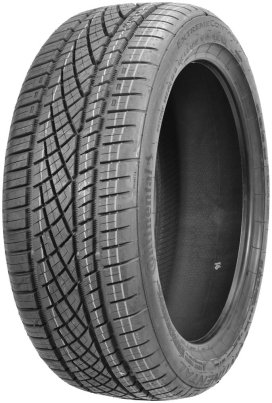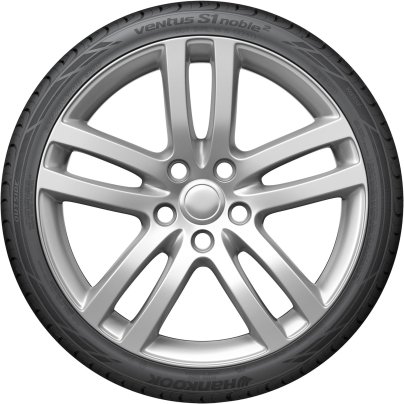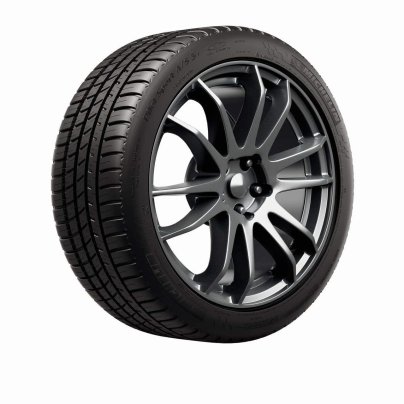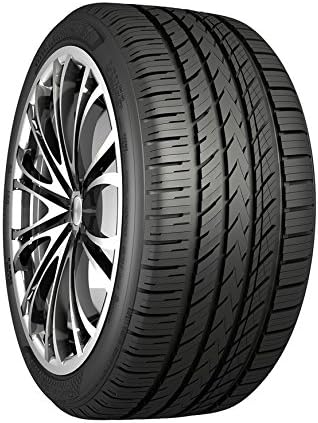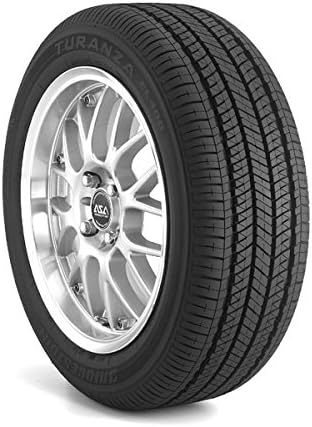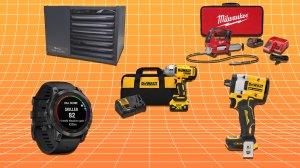We may earn revenue from the products available on this page and participate in affiliate programs. Learn more ›
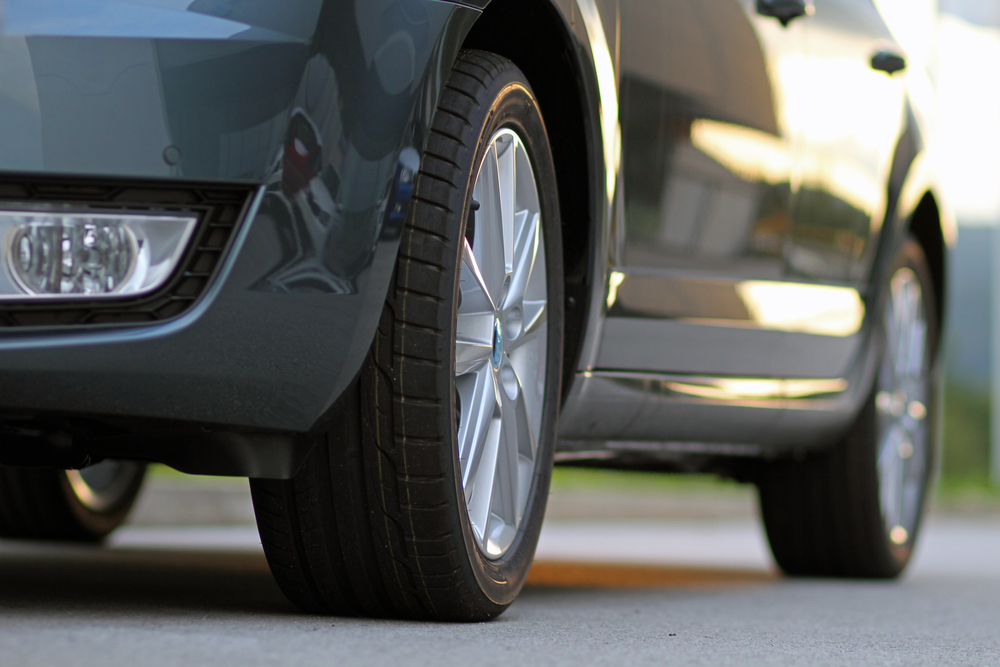
Many sports cars feature low-profile tires, which improve handling and performance. These tires give you more grip on paved roads and, combined with large rims and brakes, they also help you stop faster. Low-profile tires are also really sleek looking. If you’re a fan of big rims with less rubber, check out the top low-profile tires on the market.
Summary List
- Best Overall: Continental Extreme Contact All-Season Radial Tire
- Best Value: Hankook Ventus S1 Noble2 Performance Radial Tire
- Honorable Mention: Michelin Pilot Sport A/S 3+ All Season Performance Radial Tire
- Honorable Mention: Pirelli P Zero Nero All Season High Performance Radial Tire
- Honorable Mention: Nankang NS-25 Performance Radial Tire
- Honorable Mention: Lionhart LH-Five All-Season Radial Tire
- Honorable Mention: Kumho Ecsta Summer Performance Tire
- Honorable Mention: Bridgestone Turanza Touring Tire
- Honorable Mention: Cooper Zeon All-Season Tire
- Honorable Mention: Goodyear Eagle GT II Radial Tire
Best Low-Profile Tires: Reviews & Recommendations
Best Overall
Continental Extreme Contact All-Season Radial Tire
Best Value
Hankook Ventus S1 Noble2 Performance Radial Tire
Honorable Mention
Michelin Pilot Sport A/S 3+ All Season Performance Radial Tire
Honorable Mention
Pirelli P Zero Nero All Season High Performance Radial Tire
Honorable Mention
Nankang NS-25 Performance Radial Tire
Honorable Mention
Lionhart LH-Five All-Season Radial Tire
Honorable Mention
Kumho Ecsta Summer Performance Tire
Honorable Mention
Bridgestone Turanza Touring Tire
Honorable Mention
Cooper Zeon All-Season Tire
Honorable Mention
Goodyear Eagle GT II Radial Tire
Our Verdict on the Best Low-Profile Tires
Our pick for the best low-profile tires is the Continental Extreme Contact All-Season Radial Tire. They perform well in a variety of conditions, aren’t as loud as some competing brands, and come with a 50,000-mile warranty.
For a more budget-friendly option, consider the Hankook Ventus S1 Noble2 Performance Radial Tire.
Benefits of Low-Profile Tires
- Improved performance. Low profile tires have stiffer sidewalls and a larger contact area for increased grip on smooth surfaces. They also have stiffer springs that make for less weight transfer when you brake hard or speed up. You’ll find it easy to accelerate and stop your vehicle.
- Better fuel efficiency. Because of their stiffer sidewalls and simple tread designs, low profile tires have lower rolling resistance. The rolling resistance of a tire usually determines its fuel efficiency. Low profile tires also don’t deform as much as high profile tires and flex less as you drive. Tires that flex more absorb more energy.
- Support run-flat technology. Run-flat technology allows drivers to drive safely even when tires are fully deflated. Low profile tires have less air because of their short sidewalls, and support run-flat technology.
- They look better. “More rims, less rubber” is a trend that has existed for a couple of years. Low profile tires can be easily installed on larger rims. Larger rims give a car a sporty look.
Types of Low Profile Tires
Summer
Summer tires are built for speed and agility and offer top performance on dry roads. They have better responsiveness, braking, and cornering capabilities. This is largely attributed to their unique tread patterns and compounds which allow for improved precision on the road. Some low profile summer tires have tread patterns with less grooves for maximum road grip. Their rubber compounds are more flexible for better traction and grip.
All-Season
All-season low profile tires deliver grip and confident handling in all seasons. They provide year-round traction, thanks to their tread designs and compounds that remain flexible in all weather conditions. The tread patterns are usually symmetrical and the tires have grooves and sipes that siphon away water. All-season tires don’t produce a lot of noise and make for a comfortable driving experience. They provide good performance in both wet and dry conditions and good traction in snow.
Winter
It’s important to get winter tires for winter. Winter tires can be studded or non-studded and have deep grooves and treads that expel slush from the contact patches. These tires have tread patterns with larger gaps which increase traction on snow and ice. Low profile winter tires can be used in cold and snowy areas (with temperatures 7°C or below). They are made with soft rubber compounds that ensure they stick to the road even when temperatures go up. However, it’s worth noting that these tires produce noise at higher speeds because of their complex tread patterns.
Touring
These tires also go by the name grand touring tires and deliver responsive handling and reliable all-season traction. They usually have a higher speed rating than all-season tires and mostly feature an asymmetrical tread pattern. Low profile touring tires are designed for comfort and make road bumps and road imperfections less noticeable. Their treads have increased surface contact with the road. The tires are usually sold as all-season tires and offer a long tread life, good handling, and a comfortable, quiet ride.
Top Brands
Michelin
Michelin is a French tire manufacturer based in Clermont-Ferrand, France. It’s one of the largest tire manufacturers in the world. The company was founded by Aristide Barbier and Édouard Daubrée and initially made farm equipment and rubber balls. It created the first detachable bicycle tire in 1891. The company has created many awesome inventions over the years, like the radial earthmover tire, Michelin XDR, and the Michelin CrossClimate Tire. If you’re in the market for a low profile tire, the Michelin Pilot Sport PS2 Radial Tire is a great choice.
Goodyear
Goodyear’s full name is Goodyear Tire & Rubber Company. Frank Seiberling, an American innovator, started the company in 1898. It is currently based in Akron, Ohio. Goodyear makes tires for airplanes, cars, SUVs, racecars, trucks, motorcycles, earth-mover machinery, and farm equipment. If you love Goodyear tires, get the Goodyear Eagle RS-A Radial Tire for your vehicle.
Cooper
Cooper Tire & Rubber Company specializes in the design and manufacture of automobile and truck tires. Its subsidiary, the UK-based Avon Tyres, develops and manufactures tires for trucks, motorcycles, and race cars. Cooper was established by John F. Schaefer and Claude E. Hart back in 1914 and was known as the M and M Manufacturing Company. It is currently headquartered in Findlay, Ohio. One of its bestselling low profile tires is the Cooper P275/60R15 107T Cobra G/T All-Season Tire.
Low Profile Tires Pricing
- $50 to $100: Most of the tires in this category are all-season tires. They offer good grip, traction, and handling.
- $100 to $300: These may be winter, summer, all-season, or touring tires. Most have a treadwear warranty and offer superior handling. Some manufacturers offer a 45-day test drive.
- Above $300: These tires are sometimes sold in sets of four. Some come with wheels and feature run-flat technology. Other tires are inflated with nitrogen instead of air.
Key Features
Tire Type
As we mentioned earlier, low profile tires are split into four different categories. Each tire type has a distinct tread pattern and performs differently. For example, all season tires perform well in different conditions, but cannot handle extreme weather conditions.
Summer tires are ideal for warm weather and have large tread blocks for maximum contact with the road. Winter tires are designed for use on snow and ice. They remain flexible in cold weather and grip the road better. Touring tires are designed for comfort. Many drivers prefer them because they don’t produce any noise and make for smooth driving.
Size
The next important feature you should look at is the size of your low profile tires. If you get the wrong size, they won’t fit your car. Tire dimensions are usually indicated as 255/50R20 104V. The first three digits, 255, indicate the tire’s width in millimeters. The number 50 indicates the height of a tire’s sidewall. The “R” means that the tire is a radial tire and its layers run radially across. The number 20 refers to the wheel diameter, which is measured in inches. The number 104 indicates the load rating or the maximum weight the tire can carry, and “V” refers to the tire’s speed rating in optimal conditions. When it comes to speed rating, the later the letter falls in the English alphabet, the higher the speed rating.
Tread Life
Each low profile tire has a life expectancy (mileage). However, it’s worth mentioning that the mileage the manufacturer gives is merely an estimate. Your driving habits, weather conditions, and other factors will determine how long your tires last. The rubber compound used to make a tire also dictates its lifespan.
For instance, some tires have softer compounds that allow them to grip the road tightly. However, they have a rapid tread wear rate because some of the rubber is left on the road after every drive. Tires with a higher mileage are made with harder compounds to last longer. Low profile tires made with silica improves tread durability.
Other Considerations
- Traction. This refers to a tire’s grip capacity on wet surfaces. The best low profile tires have the highest grade: AA. Most of the tires on the market have an A grade and a few have a B grade. Get tires with an A or AA grade and you’ll never have to worry about your car sliding on wet roads.
- Temperature Rating. There are three tire temperature grades: A, B, and C. They indicate a tire’s resistance to heat generation when a car is speeding. Tires with a temperature rating of A effectively dissipate heat up to a maximum speed of over 115 mph. Those with a B rating dissipate heat when the maximum speed is between 100 mph and 115 mph. C-rated tires dissipate heat at speeds between 85 mph to 100 mph.
Tips
- While low-profile tires provide better grip, they also wear out faster than other types of tires. Their soft compounds improve traction, but the rubber doesn’t last as long, so you may need to replace them more often.
- Low-profile tires are typically louder than other tires because they have a wider contact patch area. The wider areas have more grooves, which foster more airflow, making them noisier. They also include extra reinforcements, which makes them louder.
- Low-profile tires should not be used for off-roading. They have a stiff tread, so they don’t handle well on uneven surfaces. The sidewalls are also less flexible, which isn’t good on bumpy roads.
FAQs
A: Low-profile tires tend to have less cushioning than standard tires due to the extra height in the larger sidewalls. You are more likely to feel the bumps on the road than you are with regular tires.
A: Low-profile tires can be used on a variety of cars, including models by VW, Honda, Audi, and Lexus as well as luxury brands. But unless your car comes with low-profile tires from the factory, you may need to upgrade other parts of your vehicle to accommodate them. This includes the suspension, rims, and brakes.
A: Some brands offer this technology. When you get a flat tire, run-flat technology allows you to drive as far as 50 miles even if the tire completely deflates. Since low-profiles have less air than other types of tires, it’s easy to incorporate this type of technology into them.
